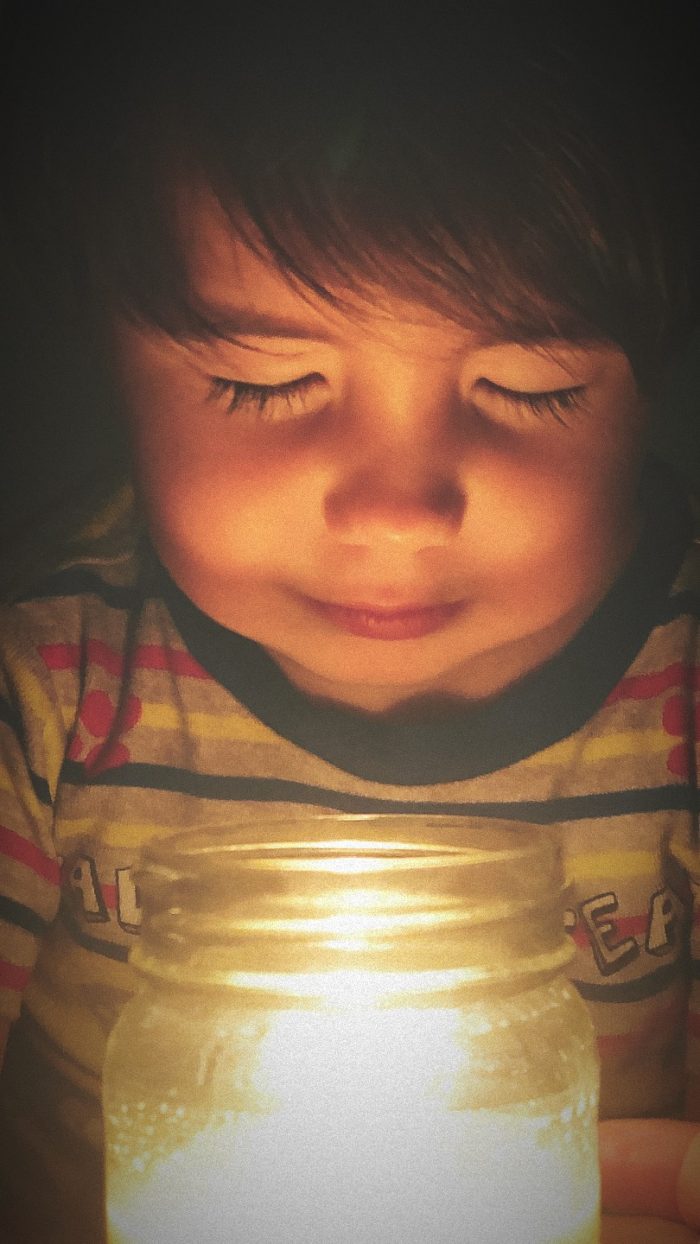Lately, my three-year-old son has been asking to go to meditation with me.
In his little voice, which is the cutest thing in the world, he skips the “d” and it melts my whole existence every time he does it.
One day, during soccer practice when they were stretching in butterfly, the coach asked him, “where are you going with those wings?” and he responded, “to meitation”—I almost cried.
But his interest in the practice of meditation and yoga is not only because of me and my husband.
Yes, we encourage it, we always talk about our practices at home, and it has become a very important part of our lives—it has even saved our relationship in the past and helped us open our hearts and ears to one another.
But it’s also thanks to his day care and preschool teachers who have integrated a daily practice for the little humans that attend the school in Williamsburg, Brooklyn.
It might not always be perfect—because again, they are toddlers—but it is magical to see how naturally inclined and curious they are about the practice.
They are not the only ones. Every week I hear stories of schools integrating meditation into their schedules, radically switching the detention system into a more mindful approach where students now have the opportunity to explore their emotions and breath.
This kind of news makes me excited about what the future can look if we keep working to spread and grow as a more mindful society.
To paraphrase one of my teachers at MNDFL Williamsburg, “The amount of information we receive in today’s world can be really overwhelming, and it is nothing compared to what information was 10, 30, or 100 years ago—we, humans, cannot process the amount of information constantly hitting us and that is why meditation is so important in our lives today—it helps us process, it helps us ground ourselves, and it keeps us sane.”
This idea shook me up.
I have been practicing for around five years, first as an addition to my yoga practice, then I started using meditation apps to help reduce stress, anxiety, and insomnia. It was until recently, when I built a true meditation routine that my perspective and motivation completely changed.
Meditation has become my daily opportunity to recalibrate my mind and well-being.
Compassion has become my motor in life—toward me and then toward those around me. Don’t get me wrong, I’m far from perfect, but that’s the beautiful thing: I don’t feel an urge to be impeccable anymore.
I’ve come to be comfortable with my mistakes and setbacks—even on the days that life gets in the way and I can’t make it to my practice.
We live in a world that is certainly in need of compassion and kindness, where ethics are blurry and suffering has become overwhelming.
But like Pema Chödrön said in her apology, “it is good news that this is all coming out and that the old culture is being shaken up. When things fall apart like this, there is the chance for positive change.”
I love the idea of rebirth. I don’t really believe in reincarnation, but I believe in the opportunity of a daily rebirth on both personal and collective levels.
We are giving humankind this opportunity by teaching our young to meditate, to cultivate love, kindness, and compassion.
Hopefully, we will not end up imposing the practice on them, but rather letting it come naturally.
Let’s practice and let our kids practice with us and grow in our patience for our practices together.
Here are five tools that have helped me with my child that I hope can be of benefit to others:
1. Talk about meditation at home. We must make it natural in our daily conversations and answer their questions about why it is that we practice and what motivates us to do so.
2. Talk about love, compassion, and kindness. Ethics is a hard term for children to understand, so we need to use language that is more relatable to them: “be kind,” “love others,” “be gentle,” and slowly integrate these into the meditation practice.
3. Light a candle for them to focus on. Obviously with adult supervision! But a candle might be a good way for everyone to focus their minds on something—until the toddler decides to blow it out.
4. “Smell the flowers, blow the candle” (without the candle). I learned this breathing technique from my son’s soccer coach and it has worked magically for us when we need to either focus and stay with our breath for a little while or just calm down from a tantrum.
It’s basically a way to teach them to breathe in through their nose (smell the flowers) and out through their mouth (blow the candle).
5. No expectations. Don’t try to impose a five minute practice from the beginning—because it won’t happen. We need to start by building an easy and flexible routine, either early in the morning right before or after breakfast or before bedtime.
Times will vary, so remind yourself and your child that “it’s okay if we only meditated for a little bit, and I’m happy that we did.”
And there will be days when the practice will not come at all—when they’ll wiggle like worms, blow the candle out, and laugh or scream, mocking our attempts to connect them to their breath.
Don’t fight, don’t force the meditation. Take a deep breath, put them to bed, or continue about the day.
Maybe take a break for a personal meditation practice and remind yourself that they are so young—they are children and we are trying to help them build a habit, but it is their habit and they will fall sometimes because that’s how life works.
May we all take part in the rebirth of a more compassionate, kind, and loving world.
~












Read 2 comments and reply